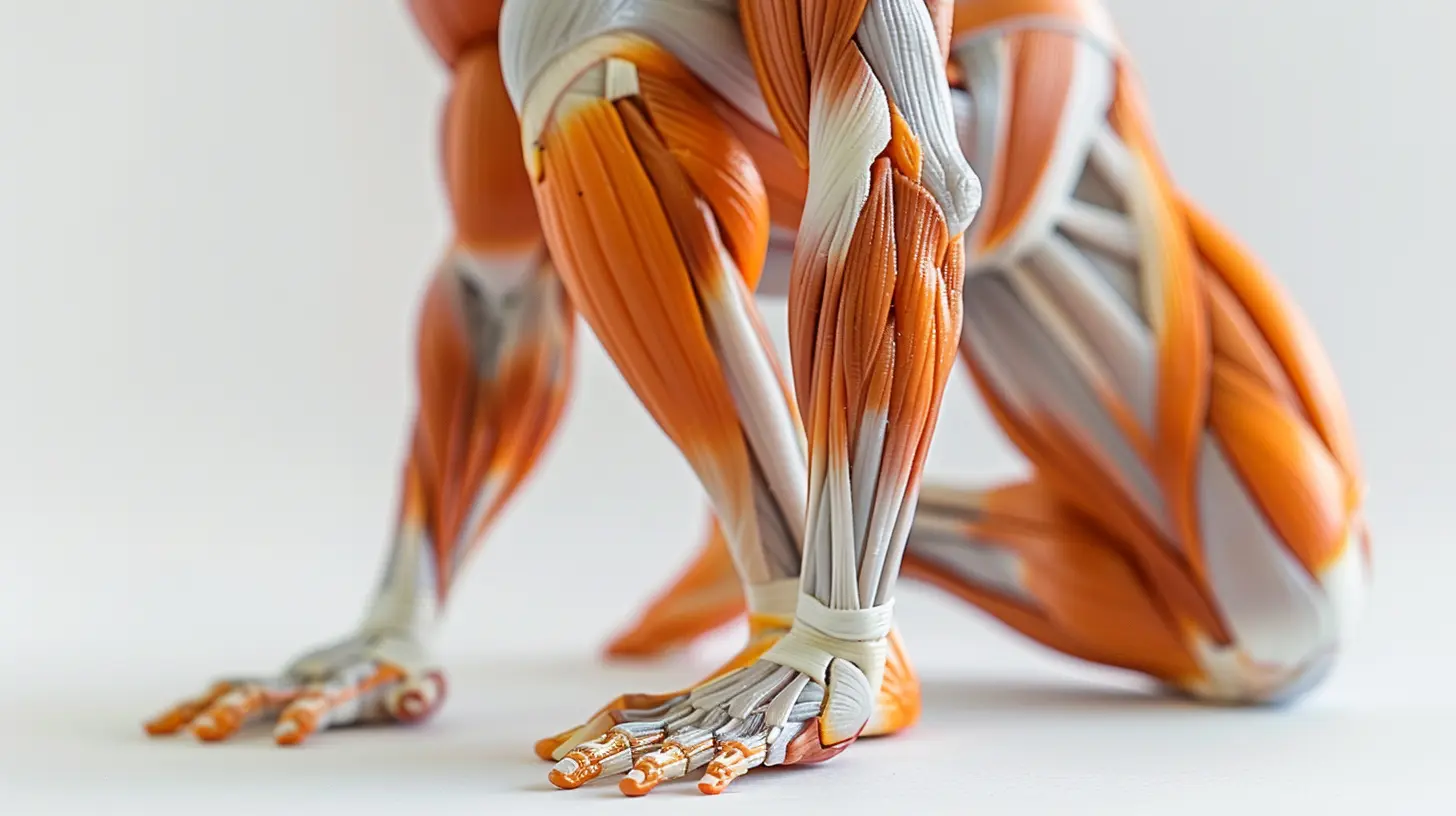Warm Up Right: Techniques to Prepare Your Body for Action
18 August 2025
Let’s get real for a second — how often do you jump straight into your workout or game without giving warming up a second thought? Be honest. Most of us have done it, and we’ve probably paid the price with sore muscles, sluggish performance, or even an injury that sets us back for weeks.
The truth is, warming up isn’t just a box to check off — it’s your body's wake-up call. Think of your muscles like a car engine. You don’t floor it the second you turn the key, right? Nope. You let it idle, warm up a little, and then hit the gas.
So if you're serious about performing at your best — whether you're hitting the gym, running a marathon, or stepping onto the field — you’ve got to do the prep work. This article walks you through a dynamic, athlete-approved, no-excuses approach to warming up the right way.
Why Warming Up Matters (Spoiler: It’s Non-Negotiable)
Before we get into the how, let’s tackle the why. Why is warming up such a big deal?Because your body isn’t instantly ready for intense action. Your heart rate needs to increase gradually, blood flow needs to redirect to your working muscles, and your joints—those precious hinges—need to loosen up.
Skipping your warm-up is like opening your laptop and expecting it to operate at full speed while it's still booting up. The result? Lag city.
Benefits of a Proper Warm-Up:
- Boosts blood circulation to muscles- Raises core body temperature
- Lubricates joints, making movement smoother
- Improves flexibility and range of motion
- Sharpens mental focus
- Reduces risk of injury (yeah, torn hamstrings aren’t fun)
Still think warming up's a waste of time? Thought so.
Static vs. Dynamic Warm-Ups: What’s the Difference?
Okay, here’s where many folks get it wrong. They stretch it out — holding a hamstring stretch for 30 seconds or pulling an arm across their chest — and call it a warm-up. That? That’s a cool-down move.Static Stretching = Chill Mode
Static stretching is when you hold a stretch in place without movement. It’s great for improving long-term flexibility, but not ideal before action. Why? Because it can temporarily decrease your power output. Not what you want before a sprint or heavy lift.Dynamic Warm-Up = Go Mode
Dynamic stretches, on the other hand, are active movements that mimic the activity you’re about to do. They gently increase your heart rate, warm up your muscles, and prime your nervous system. Basically, they tell your body, “Get ready, we’re about to roll.”
The Core Phases of a Solid Warm-Up
You don’t need to spend half your day warming up. A good warm-up can take as little as 10-15 minutes if done right. Here’s a breakdown of what that should look like:1. General Warm-Up - Get the Engine Running
This part’s all about getting your body moving and breaking a light sweat.What to do:
- Jumping jacks
- Light jogging or high knees
- Skipping rope
- Stationary bike (low intensity)
Spend about 3–5 minutes here. Nothing crazy, just enough to get your heart rate up and your body warm.
2. Dynamic Stretching - Mobilize and Activate
Now that your muscles are warm, let’s get those joints moving and muscles firing.Sample Dynamic Movements:
- Leg swings (front/back, side-to-side)
- Arm circles and shoulder rolls
- Walking lunges with a twist
- High kicks (toe touches)
- Hip circles
- Inchworms
Focus on full-body movement with controlled motions. Another 5-7 minutes here is golden.
3. Sport-Specific Drills - Practice Like You Play
This is where you dial it in. Tailor your movements to mimic what you’re about to do.Examples:
- Sprint drills (butt kicks, A-skips)
- Agility ladder for football or basketball players
- Shadowboxing for fighters
- Light reps with just the bar before weightlifting
These movements should gradually increase in intensity. Think of them as a dress rehearsal before the big show.
Don’t Forget to Activate Your Muscles
Here’s a pro tip: muscle activation exercises can supercharge your warm-up.Let’s say you’ve got “sleepy glutes” — yeah, that’s a thing. If your body isn’t engaging the right muscles effectively, others will compensate. That’s how injuries happen.
Top Activation Moves:
- Glute bridges
- Monster walks with resistance bands
- Scapular push-ups
- Dead bugs
- Bird dogs
These are especially key for folks recovering from injury or working on muscle imbalances. Trust me, a few sets here can be game-changers.
Tailor Your Warm-Up to the Activity
There’s no one-size-fits-all here. Your warm-up should reflect the demands of what you’re about to do.Warming Up for Strength Training
Focus on joint mobility and progressively heavier sets.Sample Flow:
- 5 mins light cardio
- Dynamic stretches
- Arm circles, shoulder dislocations (for upper body days)
- Goblet squats and hip openers (for lower body)
- 2–3 warm-up sets with just the bar or light weight
Warming Up for Running or Cardio
Activate your lower body and get your heart rate up gradually.Sample Flow:
- 5 mins brisk walk/light jog
- Leg swings, walking lunges, high knees
- Strides or hill sprints (short bursts)
Warming Up for Sports (Football, Basketball, etc.)
Agility, speed, and focus are key.Sample Flow:
- Jump rope or light jog
- Lateral shuffles, karaoke runs
- Sprint drills, reaction work
- Ladder drills or cone touches
The more explosive your activity, the more deliberate your warm-up should be.
Mental Warm-Up: Don’t Skip This Part
You know that feeling when your body’s ready but your brain’s still stuck in traffic? That’s why you also need to mentally warm up.Quick Mindset Prep:
- Set a clear intention: “I’m going to crush this lift.”
- Visualize your performance — yes, actually see yourself succeeding.
- Deep breathing to calm nerves and increase focus.
Your brain is the control tower. If it isn’t dialed in, don’t expect smooth takeoff.
Common Warm-Up Mistakes and How to Avoid Them
Let’s fire off some quick truths to keep you on track.🚫 Don’t skip it because you’re short on time. Even 5-10 minutes is better than nothing.
🚫 Don’t rely on static stretches pre-workout. Save those for after.
🚫 Don’t make it too easy. If you’re not sweating even a little, it’s not enough.
🚫 Don’t zone out. Be intentional with your movements. This sets the tone for your session.
The Aftermath: What Comes After the Warm-Up?
Here’s the cool part—warming up properly doesn’t just prep you for action, it makes the rest of your training session smoother. Your lifts will feel stronger. Your speed will snap faster. Your joints won’t scream at you halfway through.Post-workout, don’t forget to cool down — now's the time to stretch, foam roll, and ease your heart rate back down. You brought the fire with your warm-up; now let your body simmer down.
Final Thoughts
Warming up isn’t about going through the motions. It’s about being in motion — with purpose.Next time you're tempted to dive headfirst into your workout or game, just remember: warming up is the difference between showing up and showing out. It’s your secret weapon for going harder, faster, stronger — and staying injury-free while you’re at it.
So lace up, show up, and warm up right. Your body will thank you later.
all images in this post were generated using AI tools
Category:
Injury PreventionAuthor:

Fernando Franklin
Discussion
rate this article
1 comments
Remi Dodson
Great tips! Warming up is essential for preventing injuries and boosting performance. I’ve noticed a huge difference since incorporating dynamic stretches into my routine. It’s amazing how a few minutes can energize your workout! Can’t wait to try out some of these techniques. Keep the advice coming!
September 1, 2025 at 3:23 AM

Fernando Franklin
Thank you! I'm glad you're finding dynamic stretches helpful. They truly make a difference. Enjoy trying out the new techniques!


